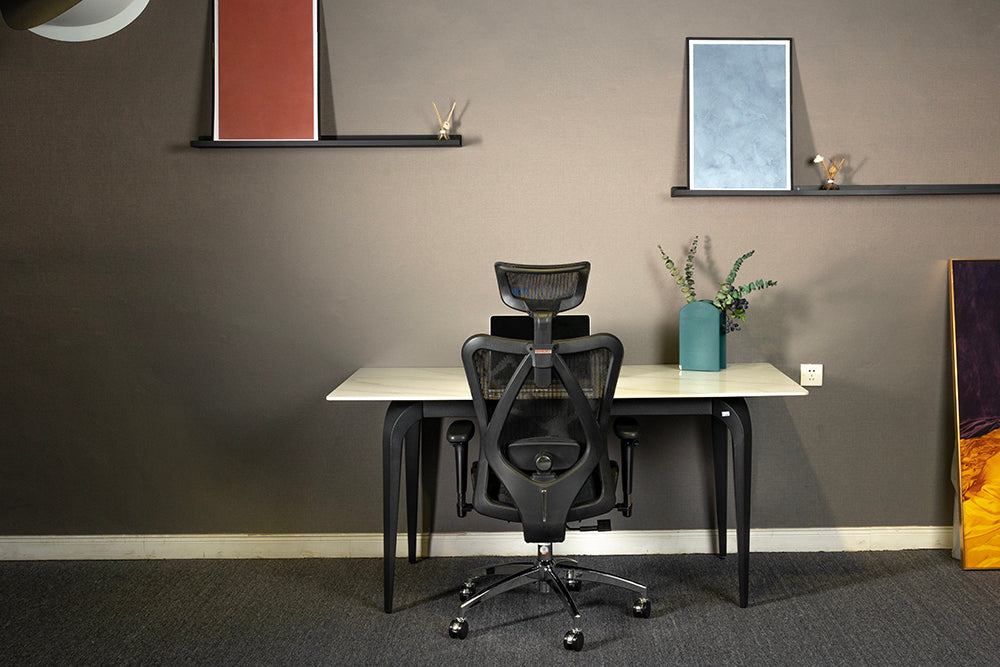When it comes to working long hours in an office setting, maintaining good posture and prioritizing your physical well-being is crucial. With the rise of health concerns related to sedentary lifestyles, many professionals are seeking alternatives to the traditional office setup. Two popular options that have gained significant attention are using ergonomic office chairs and adopting a standing work routine. In this article, we will explore the benefits and considerations of both approaches, helping you make an informed decision about what is best for your health and productivity.

The Importance of Ergonomics in the Workplace
Good posture and ergonomic support are essential for preventing musculoskeletal disorders and maintaining overall health in the office environment. An ergonomic chair is specifically designed to support proper body alignment, promoting optimal blood circulation, reducing strain on the back, neck, and joints, and alleviating discomfort associated with long periods of sitting. The chair's adjustability allows users to customize their seating position, ensuring the perfect fit for their unique body type.
The Advantages of an Ergonomic Office Chair
Postural Support: Ergonomic chairs provide excellent lumbar support, helping to maintain the natural curve of your spine and preventing slouching or hunching over.
Enhanced Comfort: High-quality ergonomic chairs come with adjustable features such as seat height, armrests, and backrest angle, allowing you to find the most comfortable position that suits your needs.
Increased Productivity: By reducing discomfort and fatigue, ergonomic chairs can enhance productivity by enabling you to focus on your work without distractions or physical strain.
Injury Prevention: Ergonomic chairs minimize the risk of developing chronic conditions like lower back pain, shoulder strain, and repetitive strain injuries (RSIs), ensuring long-term health and well-being.

The Pros and Cons of Working Standing
Improved Blood Circulation: Standing while working promotes better blood flow throughout the body, reducing the risk of conditions such as deep vein thrombosis (DVT) associated with prolonged sitting.
Increased Energy Levels: Standing can help combat sedentary behavior and prevent mid-afternoon slumps, resulting in improved energy and alertness throughout the day.
Caloric Expenditure: Standing burns more calories than sitting, albeit a small amount. Over time, this can contribute to weight management and overall fitness.
Potential Discomfort: While standing offers benefits, it can cause strain on the legs, feet, and lower back, especially if proper ergonomics are not maintained.
Reduced Focus and Productivity: Standing for extended periods may lead to decreased concentration and productivity levels for some individuals, as discomfort and fatigue can become distracting.
Finding the Right Balance
Achieving a balance between sitting and standing is essential to optimize your well-being and work performance. Consider the following tips:
Combine Sitting and Standing: Alternate between sitting and standing throughout the day to reduce the negative effects associated with either position. Use a sit-stand desk or adjustable workstation that allows seamless transitions.
Correct Ergonomics: Whether sitting or standing, prioritize ergonomics. Ensure your work surface is at a comfortable height, your wrists are supported, and your monitor is at eye level.
Movement and Stretching: Incorporate regular breaks into your routine for stretching, walking, or light exercises. This promotes blood circulation, reduces muscle tension, and helps combat the risks of a sedentary lifestyle.

Conclusion
When it comes to choosing between an ergonomic office chair and working standing, there is no one-size-fits-all solution. Both options have their advantages and considerations. An ergonomic office chair provides essential support and comfort for extended periods of focused work while working standing offers the benefits of improved blood circulation and increased energy levels. The key is to find the right balance that works for your body and work style.
Investing in a high-quality ergonomic office chair is a wise decision for individuals who primarily work in a seated position. The chair's adjustable features and support systems promote proper posture, reduce the risk of injuries, and enhance productivity. However, it's important to remember that even with an ergonomic chair, sitting for long hours can still have negative effects on your health. Incorporating regular breaks, stretching exercises, and movement into your routine is crucial to counteract the sedentary nature of sitting.
On the other hand, working standing can provide a refreshing change of position and offer benefits such as improved blood flow, increased energy, and slight calorie burn. However, standing for extended periods without proper ergonomics can lead to discomfort and fatigue. Investing in an ergonomic standing desk or adjustable workstation can help you maintain a correct standing posture and alleviate strain on your lower back, legs, and feet.
Ultimately, the best approach is to combine sitting and standing throughout the day. Experiment with different time intervals that work for you, aiming for a balance that keeps you comfortable and engaged. Listen to your body's cues and make adjustments as needed. Remember to incorporate movement breaks, stretches, and posture correction exercises into your routine to promote overall health and reduce the negative effects of both sitting and standing.
In conclusion, whether you opt for an ergonomic office chair or choose to work standing, prioritizing your health and well-being is paramount. Consider your work requirements, personal preferences, and consult with professionals if needed. By finding the right balance between sitting, standing, and incorporating movement, you can create a work environment that supports your productivity and long-term physical health.



